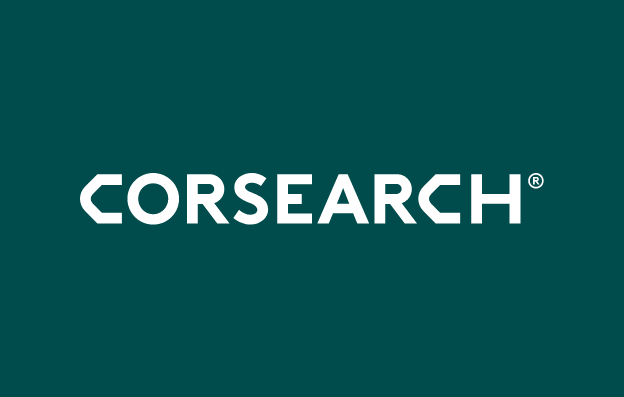Blog
The Shop Safe Act, the Inform Consumers Act & Potential for Platform Liability in the US
- Brand Protection

In the Second Circuit’s ruling in Tiffany (NJ) Inc. v. eBay Inc., 600 F.3d 93, 106 (2d Cir. 2010) (“Tiffany II”), the Court found that a platform is only liable for the activities of a third party if it intentionally induced that party to infringe or it continued to supply its services to a party that it had reason to know was engaging in trademark infringement.
In reaching this decision, the Second Circuit applied the Supreme Court’s Inwood framework in the context of an “online marketplace”, and more particularly an online auction site, for the first time, finding that Tiffany’s general allegations of counterfeiting (i.e., thousands of third-party listings for counterfeit products) occurring on the eBay platform failed to provide eBay with the requisite knowledge for liability for contributory trademark infringement to be imposed under Inwood. See Tiffany (NJ) Inc. v. eBay Inc., 600 F.3d 93, 106 (2d Cir. 2010) (citing Inwood Laboratories, Inc. v. Ives Laboratories, Inc., 456 U.S. 844, 854 (1982) (holding that, “[f]or contributory trademark infringement liability to lie, a service provider must have more than a general knowledge or reason to know that its service is being used to sell counterfeit goods. Some contemporary knowledge of which particular listings are infringing or will infringe in the future is necessary.”))
The Second Circuit relied heavily on the fact that, at the time of filing the case:
eBay is the proprietor of www.ebay.com, an Internet-based marketplace that allows those who register with it to purchase goods from and sell goods to one another. It ‘connect[s] buyers and sellers and [] enable[s] transactions, which are carried out directly between eBay members…In its auction and listing services, it ‘provides the venue for the sale [of goods] and support for the transaction[s], [but] it does not itself sell the items’ listed for sale on the site, nor does it ever take physical possession of them. Thus, ‘eBay generally does not know whether or when an item is delivered to the buyer.’”
Tiffany II, 600 F.3d at 96-97 (citing Tiffany I, 576 F. Supp. 2d at 475).
Following this decision, online platforms of all types have, largely successfully, relied on Tiffany II to shield themselves from liability for rampant counterfeiting occurring on their platforms, providing rights’ holders with little recourse against the manufacturers, wholesalers and other third-party merchants, who are using evasive tactics like aliases, false addresses and other incomplete identification information to conceal their identities and avoid detection and are advertising, offering for sale, selling and distributing counterfeit products to unknowing consumers using such platforms. Understandably, rights’ holders have been reluctant to challenge platforms as a result of the Second Circuit’s decision.
Despite this, there has been a recent shift in some federal courts’ willingness to hold online marketplaces liable for contributory infringement. For example, the United States District Court for the Central District of California[1] found print-on-demand marketplace, Redbubble, liable for willful contributory counterfeiting, and the 6th Circuit[2]overturned the district court’s summary judgment decision in favor of Redbubble and remanded the case to the district court finding that “because Redbubble’s marketplace involves creating Redbubble products and garments that would not have existed but for Redbubble’s enterprise, we find that the district court erred by entering summary judgment for Redbubble under an overly narrow reading of the Lanham Act.”[3]
These decisions signal a shift in U.S. courts’ mindset in how contributory liability under the Lanham Act should apply to modern e-commerce platforms.
Notably, in the nearly eleven (11) years since the Second Circuit issued its decision in Tiffany II, the types of services provided by online platforms have vastly expanded and so has consumers’ proclivity for using them, particularly in light of the global pandemic, which, for the last year and a half, made the idea of shopping from the safety of one’s home infinitely more attractive, and in many cases necessary. According to the U.S. Census Bureau, e-commerce spending in 2020 grew more than 32% percent over 2019, reaching $791.7 billion and some reports estimate that about one-quarter of U.S. consumers have unknowingly purchased counterfeit goods online.
The Shop Safe Act
On March 3, 2020, a bipartisan group of four (4) federal lawmakers introduced the Stopping Harmful Offers on Platforms by Screening Against Fakes in E-commerce (SHOP SAFE) Act, which amends Section 32 of the Trademark Act of 1946 (15 U.S.C. § 1114) to append a new paragraph (§ 1114(4)). This bill expressly establishes contributory trademark infringement liability for electronic commerce platforms for sales of counterfeit products that pose a risk to consumer health and safety unless the platform implements certain best practices.
The SHOP SAFE Act would require e-commerce platforms to adopt the following “best practices” to avoid contributory liability under the Lanham Act:
- Verify (through government ID or other reliable documentation) the identity, principal place of business and contact information of the third-party seller;
- Require sellers to verify and attest to the authenticity of their goods on or in connection with which a registered mark is used;
- Require sellers to contractually agree not to sell or promote counterfeit goods;
- Require sellers to contractually consent to the jurisdiction of United States courts with respect to claims related to the seller’s participation on the platform;
- Conspicuously display the verified place of business, contact information, and identity of the third-party seller, as well as the country of origin and manufacture of the goods, and the location from which the goods will be shipped;
- Require each third-party seller to only use images they own or have permission to use and that accurately depict the goods offered for sale on the platform;
- Proactively screen goods for counterfeit trademarks;
- Expeditiously disable or remove any listings that appear to use counterfeit marks;
- Terminate accounts of third-party sellers who have offered or advertised counterfeit goods on more than three occasions;
- Implement measures to ensure that sellers who have been terminated from the platform do not rejoin or remain under a different identity or alias; and
- When requested, provide information on counterfeit sellers to law enforcement agencies.
On May 20, 2021, the SHOP SAFE Act was re-introduced in the House by Representatives by Rep. Jerrold Nadler, D-N.Y., who chairs the House Judiciary Committee, along with Rep. Hank Johnson, Jr., D-Ga., Rep. Darrell Issa, R-Calif., and Rep. Ben Cline, R-Va. The House Judiciary Subcommittee on Courts, Intellectual Property, and the Internet held a hearing on the SHOP SAFE ACT on Thursday, May 27, 2021.
Two of the main criticisms of the SHOP SAFE Act surround the scope of the exemptions created by definitions in Section 1114(4)(B).
- First, the definition of ‘electronic commerce platform’ is “[a]ny electronically accessed platform that includes publicly interactive features that allow for arranging the sale, purchase, payment, or shipping of goods, or that enables a person other than an operator of such platform to sell or offer to sell physical goods to consumers located in the U.S.” Further, Section 1114(4)(C) describes the two types of e-commerce platforms to which the framework established in the Act will apply: (1) a platform with annual sales of $500,000 or more; or (2) a platform that has less than $500,000 in annual sales but that has received ten notices identifying counterfeit goods that implicate health and safety. For the latter, the applicable notices must reference this provision and liability will not apply until six months after the platform receives the tenth notice. The definition of electronic commerce platform is sufficiently vague so as to make it unclear as to whether or not the Act would apply to social media platforms, where sales of counterfeit goods are prolific but are not measured or reported in the same way as they are on “traditional” e-commerce platforms.
- Second, ‘goods that implicate health and safety’ are defined as “[g]oods the use of which can lead to illness, disease, injury, serious adverse event, allergic reaction, or death if produced without compliance with all applicable Federal, State, and local health and safety regulations and industry-designated testing, safety, quality, certification, manufacturing, packaging, and labeling standards.” This language suggests that electronic commerce platforms can avoid liability if the goods do not involve health and safety and it also creates confusion (and the potential for inconsistent enforcement) for the platforms themselves who would be left to make the determination as to which goods do or do not fall into this definition.
- A third major criticism of the Act is that while it requires electronic commerce platforms to implement a timely takedown program to remove counterfeit listings, it fails to provide a regulatory framework and does not explicitly speak to what qualifies as timely. Many e-commerce platforms already have takedown procedures, which have been wildly ineffective in assisting rights holders in combatting counterfeiting. The takedown provision of the Act is completely lacking in any efficiency to alleviate the existing heavy burden on brands.
The Inform Consumers Act
Following two previous attempts, one in the Senate on March 10, 2020, and another in the House on July 23, 2020, on March 23, 2021 the “Integrity, Notification, and Fairness in Online Retail Marketplaces for Consumers Act” or the “INFORM Consumers Act” was re-introduced to the Senate as an amendment to S. 1260, the US Innovation and Competition Act (formerly called the Endless Frontier Act). The stated purpose of the INFORM Consumers Act is to require online marketplaces to collect, verify, and disclose certain information regarding high-volume third party sellers of consumer products to inform consumers.
The original bill required online marketplaces to collect, verify, and disclose certain information from highvolume, third-party sellers. In this version high-volume, third-party sellers included online marketplace participants that conduct 200 or more transactions resulting in total revenues of $5,000 or more during a continuous 12-month period. Online marketplaces were required to acquire these sellers’ (1) bank account numbers, (2) government-issued identification, (3) tax identification numbers, and (4) contact information. Online marketplaces were required to verify this information and annually certify any changes to it. Further, online marketplaces were required to make certain information (e.g., sellers’ names and contact information) available to consumers through the sellers’ product listings and provide consumers with methods to report electronically and by telephone any suspicious activity on the marketplace.
The legislation presents an exception, however, for individual high-volume third-party sellers that allows them not to disclose their personal street address or personal phone number as long as the sellers respond to consumer inquiries submitted via email within a reasonable time.
After certain e-commerce platforms raised concerns, lawmakers made two (2) significant amendments to the Inform Consumers Act. First, in its current form, rather than posting a seller’s real name and contact information on the product listing page, the amended measure requires for those details to be provided only after a sale. Second, the revised bill also raised the threshold for sellers to have to disclose that information to e-commerce marketplaces. To be mandated to do so, sellers must register 200 transactions amounting to an aggregate of $7,000 in sales on the marketplace, up from $5,000 in the original proposal.
The bill’s supporters pushed to have the amended version included in the landmark United States Innovation and Competition Act (the so-called “China Bill”), which was passed by the Senate in early June of this year, but aggressive lobbying from some e-commerce platforms resulted in its exclusion from the bill that was ultimately passed by the Senate.
Since the Innovation and Competition Act must still be adopted by the House, there remains some possibility that the Inform Consumer Act can be added there or in the conference committee that would need to reconcile differences between bills passed in the Senate vs. the House.
Some of the main criticisms of the Inform Consumers Act by rights’ holders are:
- First, there is no framework for authenticating the information provided by the sellers and no penalty for the provision of false information beyond the requirement that the marketplace suspend the seller, which can easily be circumvented by the seller creating multiple additional accounts or remaining below the sales threshold. There is also no private civil cause of action for violations of the Act.
- Second, bad actors could avoid the reach of the act by entering into 199 transactions and then (or simultaneously) opening another (or multiple) storefront(s).
- Finally, the Act has no teeth in that it doesn’t assist consumers in determining whether a product is counterfeit, but merely requires (post-sale) identification of the seller, who, in most cases is not even necessarily the source of the counterfeit product.
Download “Three Strikes and Out”
How e-commerce platforms can protect consumers from repeat offenders
Our white paper provides brands, e-commerce platforms and legislators with data on the proportion of repeat infringements undertaken by the same sellers, who use key global online marketplaces and social media platforms to infringe intellectual property.
Learn how platforms can protect brands and consumers can by implementing strong seller verification and a ‘three-strikes-and-out’ policy.
References
[1] See Y. Y. G.M. SA v. Redbubble, Inc., Case No. 2:19-cv-04618-RGK-JPR.
[2] See Ohio State Univ. v. Redbubble, Inc., 989 F.3d 435 (6th Cir. 2021)
[3] Id. at 440.






